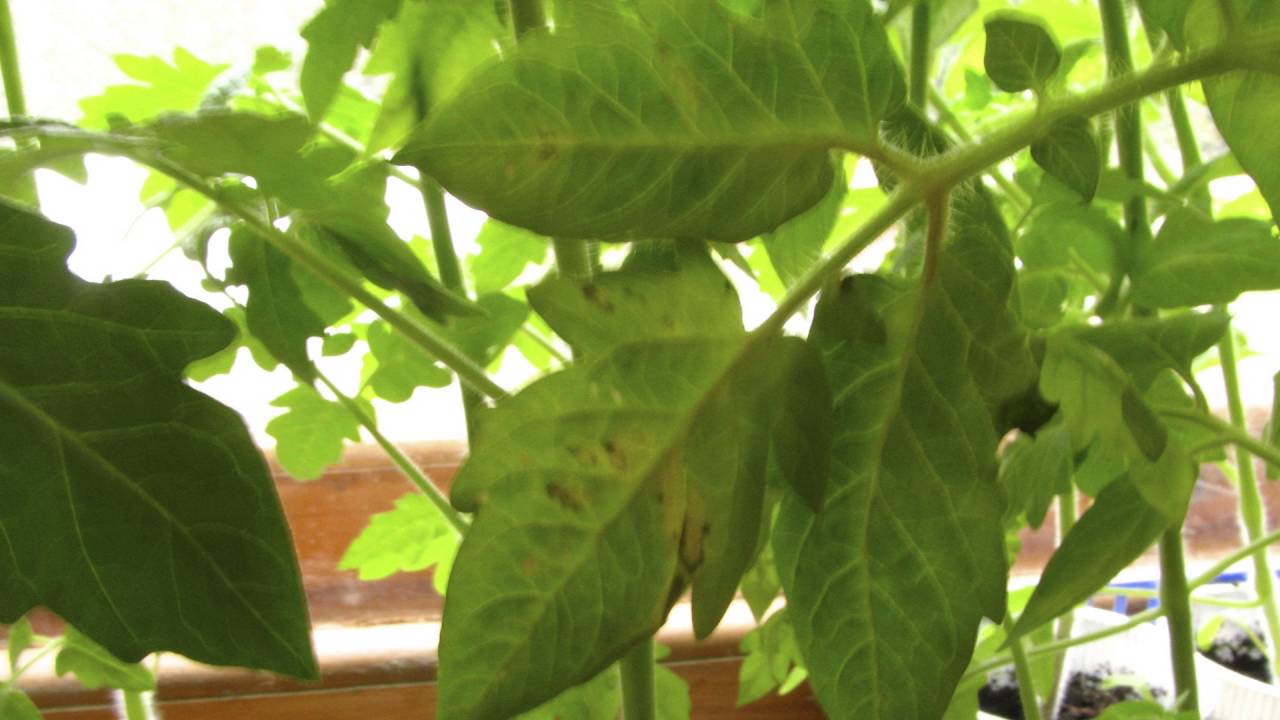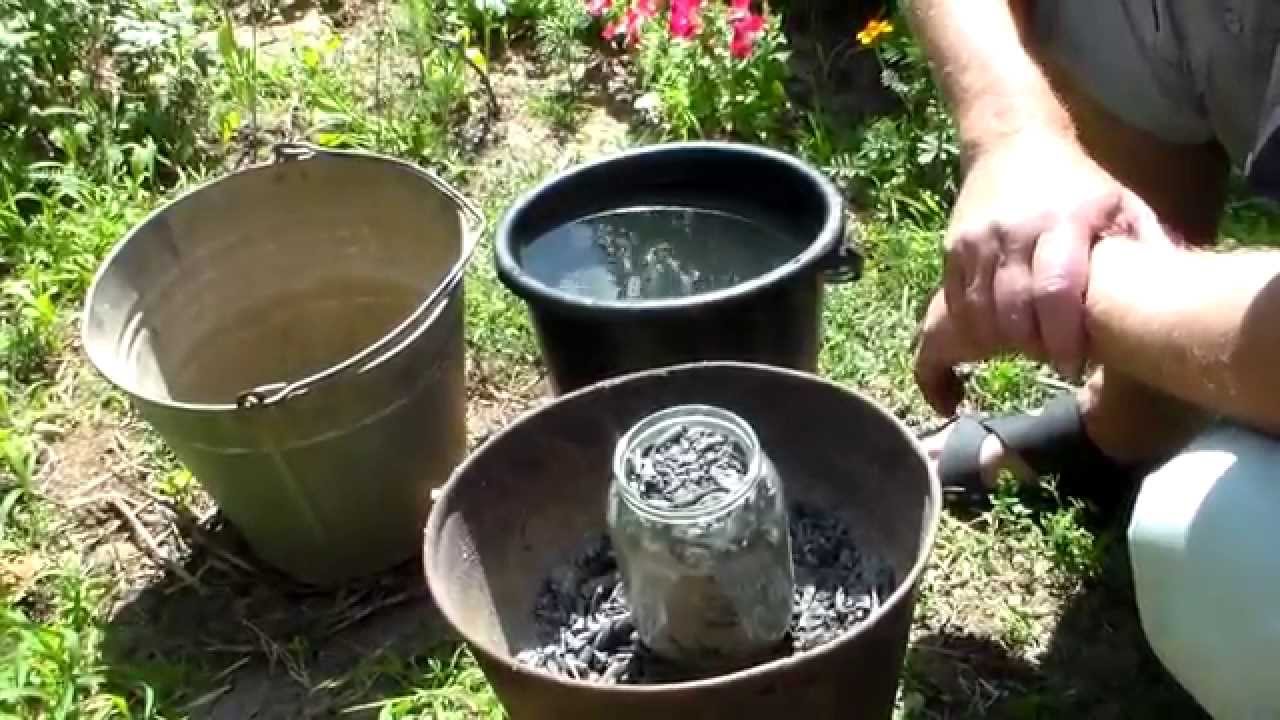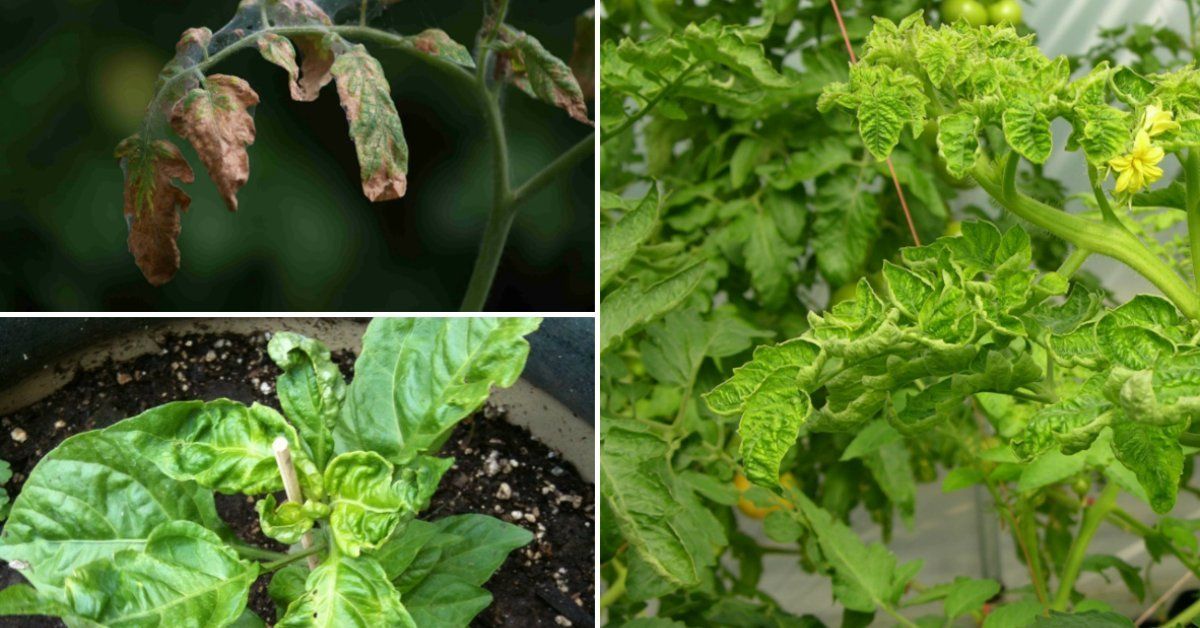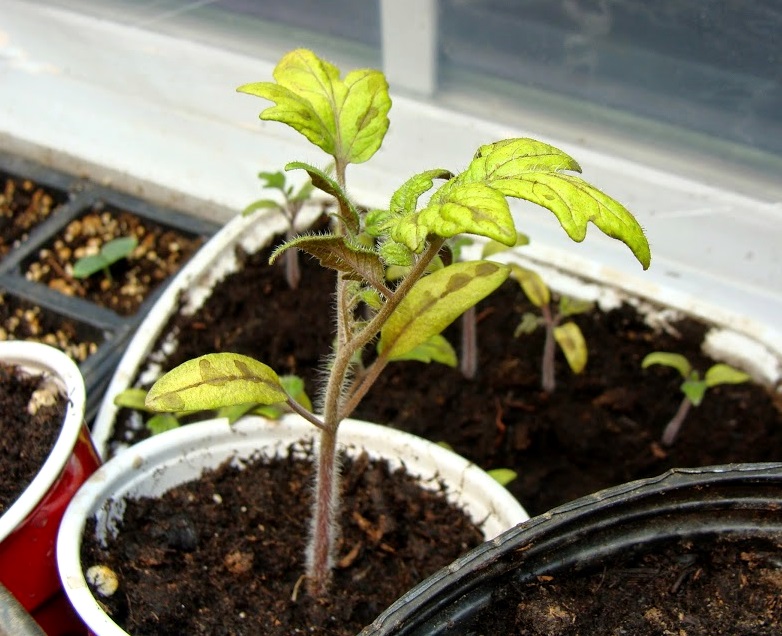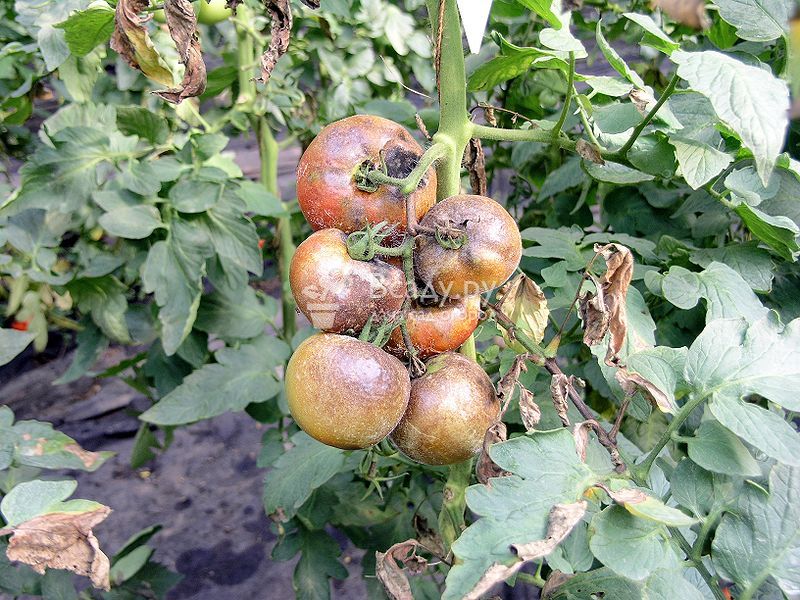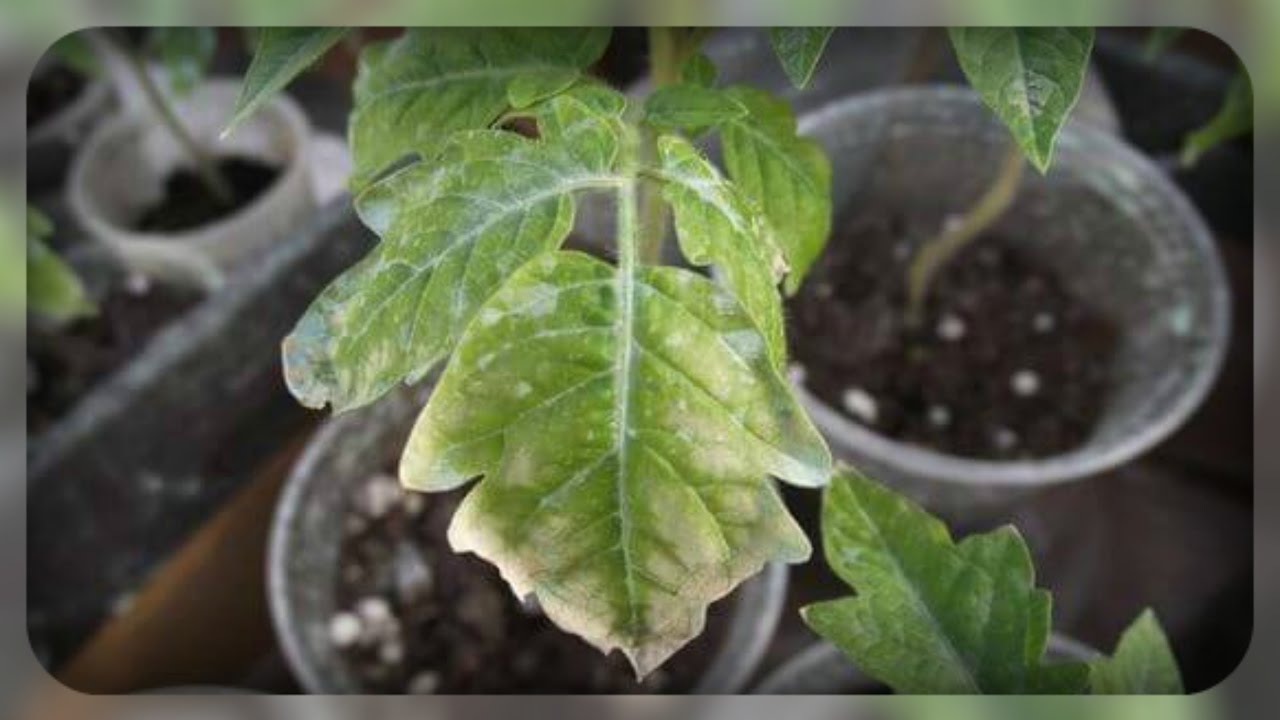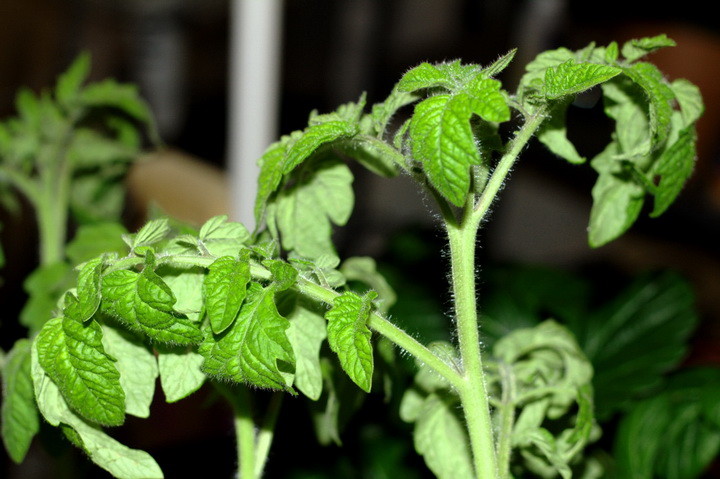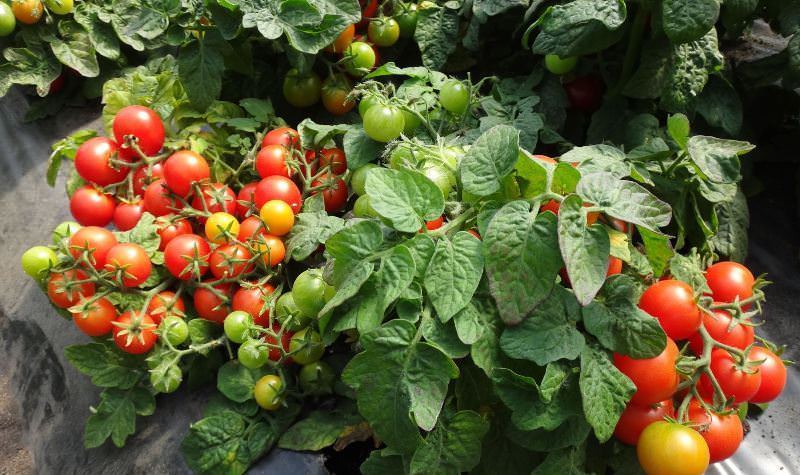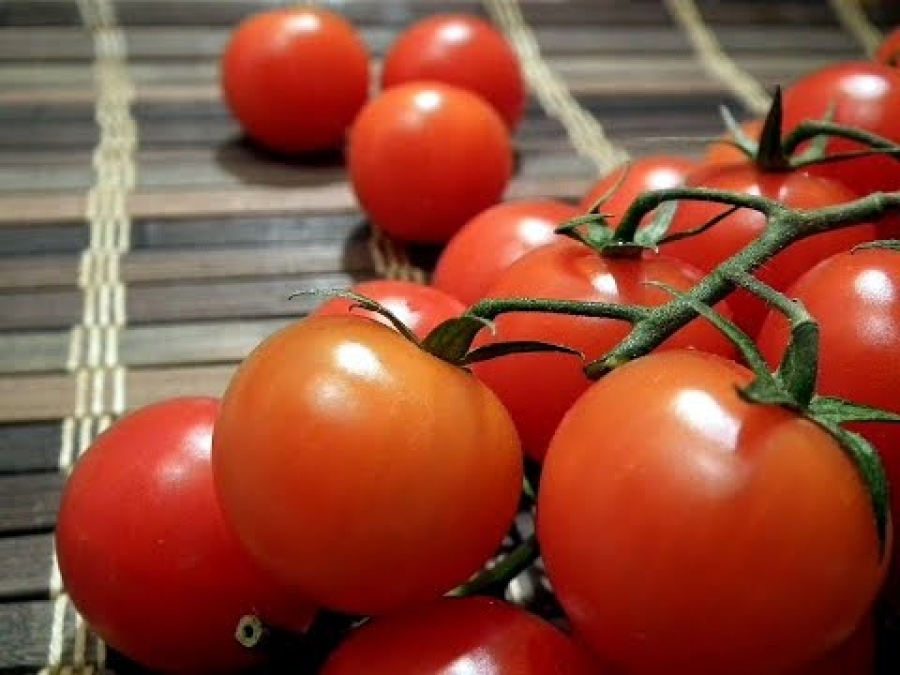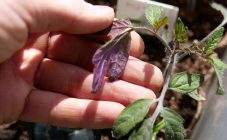Tomatoes are a very unpretentious culture belonging to the nightshade family. However, in the process of preparing seedlings, some difficulties may arise, for example, wilting and yellowing of the leaves. Knowing why the leaves of tomato seedlings fall at home, you can take timely measures and save the situation.
Why tomato leaves turn yellow
Plants are equipped with chlorophyll - a substance that, under the influence of the sun's rays, is able to synthesize nutrients from carbon dioxide and water. If the leaves turn yellow, it means that the plant has undergone a disease called chlorosis, this is the result of a violation of the production of chlorophyll.
There may be several reasons for this phenomenon, and they can be detected by peculiar signs.
One of the most common reasons why tomato leaves turn yellow is a lack of all kinds of trace elements with insufficient soil fertilization.
A deficiency of this substance can be recognized by the red-blue veins on the leaves of tomatoes, in addition to this, the leaves on the diseased bush are unusually small. The lower ones rapidly begin to turn yellow, and then the plant completely shed its leaves.
Plants can be saved by feeding with ammonium nitrate. It is recommended to dissolve the fertilizer in water in a ratio of 40 g per 10 liters of water, pouring about one liter of fertilizing under each bush. In this case, it is necessary to avoid getting the solution on the tomato leaves in order to avoid burns.
It is required to add wood ash under each bush. To do this, you need to take 5 liters of settled water, adding a few tablespoons of ash to it, stir the solution thoroughly and pour the resulting mixture on the plant.
The yellowness of the upper part of the leaf plate indicates that the plant needs phosphorus. In this case, superphosphate should be included in the top dressing (three tablespoons of fertilizer will be needed for one bucket of water).
Another danger to seedlings is zinc deficiency. It manifests itself in the yellowing of the leaves in the area of the petiole, which eventually affects the entire platinum leaf. In parallel, small yellow blotches are formed on young leaves. Tissue necrosis immediately affects the entire surface of the leaf.
Much less often there is a deficiency of other beneficial trace elements. To understand what exactly should be fed to the plants, you need to take a closer look at which parts of the tomato seedlings have changed their color:
- a yellowed top of the plant indicates a lack of calcium;
- the yellow edges of the leaf plates indicate a magnesium deficiency;
- all the leaves turn yellow, begin to curl up and dry out - tomatoes need iron and manganese.
To eliminate the lack of minerals, it is required to carry out foliar feeding of tomato seedlings using complex fertilizers.
At the same time, one should not and very much get carried away with watering: excess moisture can lead to "root suffocation" and, possibly, damping out of the bushes.
First of all, the cotyledon leaves turn yellow and fall, and then all the remaining ones. In the event that the soil is waterlogged, it is required to stop watering until the top layer of the soil dries out three quarters of the depth of the pot.
An excellent scheme is not very frequent abundant hydration. Watering is required when the ground is completely dry.
Adequate lighting is one of the key conditions for growing healthy and strong tomato seedlings. It is necessary to choose the most lighted window sill for her and provide additional lighting. The following indicators are of great importance:
- backlight duration;
- the number and wattage of artificial lamps used.
It is generally accepted that tomato seedlings need to be illuminated for 8-12 hours every day.
How to calculate how many lamps are required? One square meter of seedlings requires 200 volts.
The root system of tomatoes needs sufficient quantities to function properly. If the pot in which the seedling grows is very small, the lower leaves of the seedling immediately begin to turn yellow. Many experienced gardeners advise using pots with a volume of 3 to 5 liters, but such containers are more suitable for growing seedlings in greenhouses.
If the temperature in the room is more than 30 degrees, the leaves of the seedlings begin to fall off.
At the same time, cooling affects the seedlings in a bad way. The leaf plates, acquiring a bluish tint, begin to gradually fall off. The ideal temperature regime is considered to be about 25 degrees during the day and 20 at night.
Pests and fungal diseases
If, following all the recommendations and tips, tomato leaves still fall off, pests may be the reason. It is required to thoroughly study all the seedlings. Having found bugs, it is necessary to carry out proper treatment with insecticides.
A viral or fungal disease can also cause problems. In this case, it is worth giving importance to treating the bushes with a fungicide and adhering to preventive measures.
Fusarium is a fungal disease that affects tomato seedlings if the grower does not take proper preventive measures. It can be manifested by such signs:
- the lower leaves begin to wither and turn yellow;
- the leaves on the top of the plant wither and deform;
- the stem section shows that the vessels have acquired a brown color.
Competent prevention consists in the selection of varieties that are more resistant to diseases, seed and soil dressing. The development of fusarium can be provoked by excessive moisture in the soil and air, so you should constantly ventilate the room.
So, it became clear why the leaves of tomato seedlings turn yellow at home. Observing all the rules for growing tomato seedlings and providing it with proper care, you can prevent such a problem, or find a competent way out of the current situation. As a result, tomatoes will be able to grow safely and produce the expected harvest.
